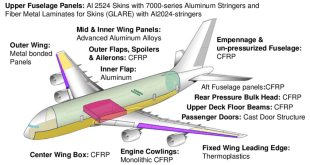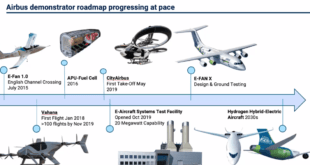DARPA has been developing Artificial Intelligence (AI) based technology under the Air Combat Evolution (ACE) program to assist pilots in dogfighting by taking over low-level maneuvering tasks from fighter pilots.
In August 2020, the agency reported that an Artificial Intelligence has defeated Human Lockheed F-16 Pilot In Virtual Dogfight sponsored by it. The first round featured each team flying their algorithms vs. adversary AI algorithms. The teams then competed against each other in a round-robin style competition. After two days of competition, the winning algorithm of Darpa’s Air Combat Evolution program took on a human pilot in a Lockheed Martin (LMT) F-16 simulator. Artificial intelligence teams from Boeing (BA) subsidiary Aurora Flight Sciences, EpiSys Science, Georgia Tech Research Institute, Heron Systems, Lockheed Martin, Perspecta Labs, PhysicsAI, and SoarTech entered the competition. In a semifinal, Lockheed beat Physics AI. Heron defeated Aurora in the other semifinal and then took down Lockheed in the final. Heron scored five kills vs. zero for the human pilot.
The Defense Advanced Research Projects Agency is now asking the industry to develop new AI capabilities that could give U.S. drones an edge in air-to-air combat.
DARPA’s Tactical Technology Office released a Broad Agency Announcement in Nov 2022 for its new Artificial Intelligence Reinforcements (AIR) program, with the goal of developing tools for achieving “dominant tactical autonomy.”
‘Tactical Autonomy’ is defined as autonomous systems acting with delegated and bounded authority of humans in support of tactical, short-term actions associated with a longer-term strategic vision. The objective of the DOD Tactical Autonomy program is to develop and demonstrate autonomous technologies that will enable various AF / USSF and Department of Defense (DOD) mission sets, with minimal supervision from human operators in environments that are complex and unpredictable with applications in Air, Space, Cyberspace, Ground and Sea. Some areas of particular interest are tactical autonomous systems that: Enhance multi-domain situational awareness; Reduce Cognitive Workload; Enable Force Protection; Support Cyber Defense; Augment Logistics; Automate maneuverability and mobility. The technology demonstrations that result from these efforts will substantially improve the Air Force / USSF and DOD’s capability to conduct missions in a variety of environments while minimizing the risks to Airmen / Guardians and DOD personnel.
Artificial Intelligence Reinforcements (AIR) program
Autonomy solutions will initially be developed and demonstrated on human-on-the-loop F-16 testbeds and then transferred to an uncrewed combat aerial vehicle. The Artificial Intelligence Reinforcements (AIR) program will create a dominant Artificial Intelligence (AI) air combat capability compatible with existing sensors, electronic warfare, and weapons within dynamic and operationally representative environments. AIR will also develop the processes needed to rapidly design, test, and deliver future iterations of AIR software products.
DARPA is looking for “advanced Modeling and Simulation (M&S) approaches and dominant Artificial Intelligence (AI) agents for live, multi-ship, beyond visual range (BVR) offensive and defensive counterair missions,” according to the solicitation.
The AIR initiative will focus on “previously avoided dimensions” of the challenge, according to the notice, including “fully-integrated sensors, scalability to larger engagements, adaptability to changing conditions in open-world problems, and the ability to learn predictive models that incorporate uncertain knowledge of adversary and self, as well as deceptive effects.”
The two-phase, four-year program will have two technical focus areas: model development and “multi-agent AI agent training.” The former will include creating “fast and accurate models that capture uncertainty and automatically improve with more data,” and the latter will focus on developing “AI-driven algorithmic approaches which enable real-time distributed autonomous tactical execution within uncertain, dynamic, and complex operational environments,” according to the special notice for the proposers day.
Phase 1 of the AIR program is slated to last 18 months and phase 2 is expected to continue for 30 months.
DARPA plans for multiple awards totaling $30 million for phase 1 and $40 million for phase 2.
There will be approximately six awards for phase 1 base efforts across the two technical areas, with up to four options for phase 2 that may be exercised at the conclusion of phase 1 “based on concept viability and program execution,” according to the BAA.
 International Defense Security & Technology Your trusted Source for News, Research and Analysis
International Defense Security & Technology Your trusted Source for News, Research and Analysis


